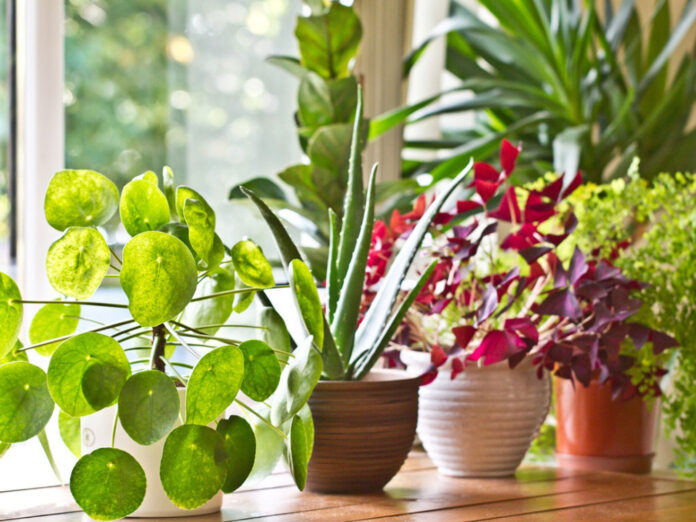Looking to add a little life to your home or garden? Check out the amazing world of plants! There are all sorts of plants to choose from, and each one has its own unique set of benefits. Whether you’re looking for a way to improve your air quality or just want some fresh flowers in your vase, plants are a great option. Keep reading to learn more about these interesting creatures!
Types of plants that are best for indoors
When it comes to plants, there are many different types to choose from. Some are best suited for outdoors, while others thrive indoors. If you’re looking for a plant to spruce up your home or office, consider one of these options.
First, there’s the snake plant. Also known as the mother-in-law’s tongue, this tough plant is almost impossible to kill. It prefers bright light but can also tolerate low light, making it ideal for offices and other indoor spaces. Snake plants are also known for their air-purifying properties, making them a great choice if you’re looking to improve the quality of your indoor air.
Next, there’s the spider plant. Another hardy option, spider plants are relatively easy to care for and can tolerate a wide range of light levels. They’re also known for being excellent at filtering out toxins from the air, making them another great choice for improving indoor air quality. And, unlike most plants, they actually prefer to be pot-bound, so you won’t have to worry about repotting them very often.
If you’re looking for a more decorative option, consider the peace lily. One of the best types of plants to grow indoors is the peace lily. The plant is not only beautiful, but it is also easy to care for. Native to tropical regions, peace lilies thrive in warm, humid environments. Peace lilies are known to be very effective at absorbing excess moisture from the air. This makes them ideal for rooms that tend to be humid, such as bathrooms or kitchens. If you are looking for a plant that is both attractive and beneficial, a peace lily is a great option.
Tips on how to water and care for plants
Anyone who has ever tried their hand at gardening knows that taking care of plants is no easy task. From figuring out how much water they need to ensuring that they get enough sunlight, there is a lot to consider. However, by following a few simple tips, you can ensure that your plants stay healthy and thrive. First, be sure to water them regularly, and check the soil before watering to make sure it is dry. Second, give them enough sunlight – most plants need at least six hours of sunlight per day. Finally, fertilize them periodically to give them the nutrients they need to grow. By following these simple tips, you can keep your plants healthy and happy.
Ideas on how to decorate with plants
Plants are a wonderful way to add life and color to your home. But how do you know what kind of plants to choose, and where to put them? Here are a few ideas to get you started.
One easy way to add plants to your decor is to use them as accents. Place a large plant in a corner of the room, or group several plants together on a table or shelf. You can also hang plants from the ceiling or place them in wall sconces. If you have small children or pets, make sure to choose plants that are non-toxic and difficult to knock over.
Another way to incorporate plants into your home is to use them as part of your color scheme. For example, if you have a green sofa, try adding some potted plants in shades of green, white, and cream. Or, if your bedroom is decorated in blues and yellows, consider adding a plant with blue or yellow flowers. Plants can also be used to add texture to a room. For example, a fern would add a touch of whimsy to an otherwise formal living room.
Finally, don’t forget that plants need care and attention just like any other type of decoration. Be sure to water them regularly, give them plenty of sunlight, and fertilize them when needed. You should also check on them regularly for pests or diseases. If you notice anything wrong with your plant, be sure to take action immediately. The sooner you catch a problem, the easier it will be to fix.
If you need help picking out plants or taking care of them, be sure to visit your local plant nursery. The experts there will be able to help you choose the right plant for your needs and teach you how to take care of it properly. They can also provide you with all the supplies you need to keep your plant healthy and happy. So don’t delay, head to your local plant nursery today!
Benefits of having plants in your home or office
Plants are more than just aesthetically pleasing – they can also improve the quality of your indoor air, boost your mood, and increase your productivity. Here are just a few of the benefits of having plants in your home or office:
Indoor plants help to purify the air by absorbing harmful toxins and releasing oxygen. This can lead to improved respiratory health and increased energy levels.
Studies have shown that being around plants can reduce stress levels and promote relaxation. So if you’re looking for a way to unwind after a long day, consider adding some greenery to your space.
Not only do plants make us feel good, but they can also make us more productive. One study found that workers who had plants in their office were 15% more productive than those who didn’t. So if you’re looking for a way to boost your work performance, add some plants to your desk!
Advice on choosing the right plant for your needs
A plant nursery can be a great place to find the perfect plant for your needs. However, with so many options available, it can be difficult to know where to start. Here are a few tips to help you choose the right plant for your needs:
1. First, consider the size of the space you have available. You’ll want to choose a plant that is appropriate for the amount of space you have.
2. Second, think about the amount of light the space receives. Different plants need different amounts of light, so it’s important to choose one that will thrive in the lighting conditions you have.
3. Third, take into account the temperature of the space. Some plants prefer cooler temperatures, while others do well in warmer climates. Make sure to choose a plant that will be comfortable in the temperature range of your space.
4. Finally, consider your personal preferences. Do you want a low-maintenance plant? Or one that is known for being particularly easy to care for? Choosing a plant that fits your style will help you enjoy it even more.
By following these tips, you can be sure to find the perfect plant for your needs.











